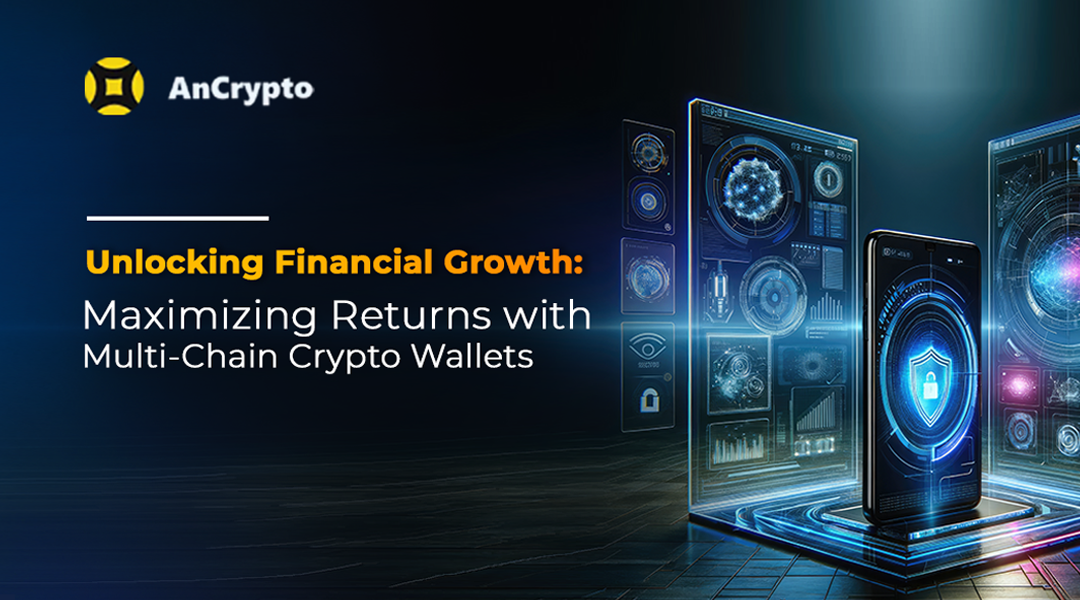
May 3, 2024
Want to grow your crypto assets? Well! A multichain crypto wallet is your key! These wallets are the gateways that grant you access to the entire Web3 domain to explore different blockchain networks, tokens, and investing ways.
While investing using the multichain crypto wallet, you’re not limited to just one blockchain. Instead, it allows you to connect to different platforms. which means more investment options, better chances for profit, and easier access to different digital assets.
The guide uncovers different ways these wallets can help you grow your wealth.
Strategies To Earn More Using Multichain Crypto Wallet
- Staking for Passive Income
One of the primary avenues for earning passive income with multichain wallets is through staking. Staking involves locking up your crypto assets to support the operations of a blockchain network. In return for your contribution, you earn rewards in the form of additional tokens.
This process is similar to earning interest on traditional savings but within cryptocurrencies. Multichain wallets enhance this capability by allowing users to stake across different blockchains simultaneously. This diversification not only maximizes potential rewards but also spreads risk across multiple networks, contributing to a more robust investment strategy.
- Spot Trading for Profits
Multichain wallets facilitate spot trading, a strategy where users capitalize on the price movements of various cryptocurrencies. By accessing multiple blockchain networks, investors can identify opportunities to buy assets at lower prices and sell them when prices rise, generating profits from market fluctuations.
The seamless integration of different chains within a single wallet streamlines the trading process, enabling easy execution of transactions and access to a wide range of trading pairs. This flexibility and agility are instrumental in optimizing trading strategies and enhancing overall portfolio performance.
- Accessing DeFi for Returns
Decentralized finance (DeFi) has emerged as a significant driver of wealth creation within the crypto space. Multichain wallets play a crucial role in enabling users to participate in DeFi protocols such as lending, borrowing, decentralized exchanges (DEXes), and yield farming. These platforms offer attractive returns compared to traditional financial instruments, with opportunities for users to earn interest on deposited assets, engage in liquidity provision, and participate in governance mechanisms.
Multichain wallets provide seamless connectivity to a diverse range of DeFi applications across multiple blockchains, empowering users to diversify their income streams and optimize their investment portfolios.
- Futures Trading for Risk Management
For users interested in more advanced trading strategies, multichain wallets offer access to futures markets and derivatives platforms. Futures trading involves speculating on the future price movements of assets, allowing investors to hedge against risks and amplify potential gains. While futures trading can be lucrative, it also carries higher risks due to leverage and price volatility.
Multichain wallets with integrated futures trading capabilities provide users with the tools to implement sophisticated risk management strategies, such as stop-loss orders and position sizing, mitigating potential downsides while capitalizing on market opportunities.
- Cross-Chain Opportunities for Efficiency
Multichain wallets excel in facilitating cross-chain transactions, enabling users to capitalize on price differentials and market inefficiencies across multiple blockchain networks. By seamlessly moving assets between chains, investors can optimize their trading strategies, maximize arbitrage opportunities, and enhance overall trading efficiency. This cross-chain functionality not only improves liquidity but also broadens the scope of investment possibilities, offering a more comprehensive and dynamic approach to wealth growth.
- Crypto Airdrops for Portfolio Growth
Cryptocurrency airdrops can be a valuable way to grow your crypto assets when using a multichain wallet. By holding a diverse range of cryptocurrencies across different blockchain networks in your multichain wallet, you increase your chances of being eligible for and receiving various airdrops.
These airdropped tokens can directly add to the value of your crypto portfolio. Moreover, many of these airdropped assets have the potential to appreciate over time, allowing you to profit when you decide to sell them in the future.
- HODL Strategy for Long-Term Wealth Building
Adopting a HODL mindset and maintaining your cryptocurrency can be a powerful wealth-building strategy. By resisting the urge to actively trade or sell your crypto assets, you can benefit from the long-term appreciation of their value.
The diversification enabled by a multichain wallet ensures you can participate in the overall growth of the cryptocurrency market. As the prices of your various crypto assets rise over time, the value of your multichain wallet’s holdings will correspondingly increase.
Key Considerations For Multichain Crypto Investment
As you start using multichain crypto wallets to build your wealth, there are some important things to think about:
- Security:
Make sure the wallet you choose has strong security features like encryption, a non-custodial nature, secure storage, and assistance in case something goes wrong. Keeping your digital money safe should be your top priority.
- Easy to Use and Understand:
Pick a multichain wallet that’s easy to use and has a simple interface. This makes it easier for you to manage your investments, do transactions, and explore different ways to make money with cryptocurrencies.
- Check Which Blockchains It Supports:
Not all multichain wallets work with every blockchain network. Make sure the wallet you choose supports the blockchains you’re interested in. This way, you can invest in the digital assets you want without any limitations.
- Look for Extra Useful Features:
Some multichain wallets come with extra features that can make managing your crypto investments easier. For example, they might have a built-in tool to swap between different cryptocurrencies, keep track of your portfolio, or provide real-time crypto updates. These features can improve your overall experience with crypto management.
- Keep Learning and Adapting:
The world of cryptocurrencies and Web3 technology is always changing. Keep yourself up to date with ongoing crypto trends. This helps you learn about new investment opportunities and adjust your strategies to make the most out of them.
Accelerate Your Crypto Journey With AnCrypto: The Best Multichain Crypto Wallet
Experience accelerated crypto growth with AnCrypto’s multichain wallet. Secure, user-friendly, and compatible across various blockchain networks, it empowers you to diversify and maximize your investments. Enjoy advanced features like instant swaps, comprehensive portfolio tracking, staking, DeFi interaction, and real-time updates for productive investments. Stay informed with real-time updates, facilitating strategic decisions and adaptability.
Create your future crypto wealth with AnCrypto Multichain Wallet, your gateway to endless opportunities in the dynamic Web3 world!
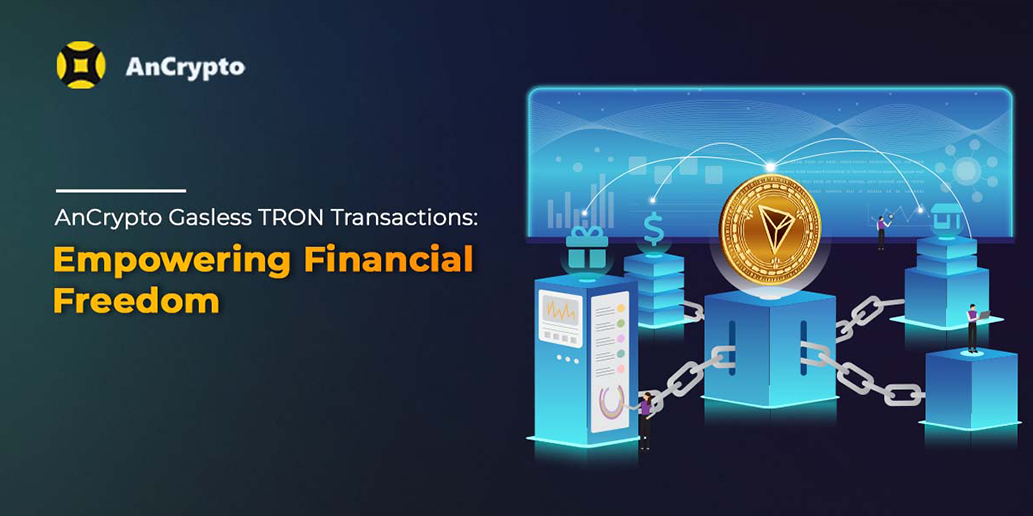
Feb 20, 2024
Cryptocurrency wallets have undoubtedly made digital currency accessible and easy to use for everyone, but only a few cater to affordable transactions. AnCrypto proudly distinguishes itself as a web3 crypto wallet, facilitating gas-free crypto transactions to users on the TRON network, leading the way in making cryptocurrencies accessible to everyone.
This innovation is already benefiting the millions of users who regularly transact over the TRON network. And, if you are one of them, keep reading to find out what this means and how it can benefit you.
Understanding Gasless Transactions
Gas fees have long been a concern for users navigating blockchain transactions, often adding significant costs, especially during network congestion. It refers to the fee required to execute operations or smart contracts on a blockchain network like TRON.
AnCrypto’s gasless TRON transactions eliminate these fees, empowering users to send, receive, and swap TRX tokens without incurring additional expenses.
The Zero TRC 20 Gas fee not only reduces the financial burden on users but also promotes accessibility to DeFi protocols, driving global financial inclusion.
Benefits of Gasless Transactions on TRON
Gasless transactions on the TRON network offer several advantages that enhance the user experience and promote wider adoption of cryptocurrencies:
- Cost Savings:
By removing gas fees, AnCrypto enables users to save money on each transaction, regardless of network conditions. This cost-saving feature makes cryptocurrencies more accessible to a broader audience, including those with limited financial resources.
- Streamlined Access to DeFi:
Gasless TRON transactions simplify participation in decentralized finance (DeFi) protocols by eliminating the financial barriers associated with gas fees. Users can seamlessly interact with various DeFi applications without worrying about transaction costs, thereby fostering greater engagement and innovation within the ecosystem.
- Global Financial Inclusion:
The Zero Tron Network Gas Fee empowers individuals worldwide to access and utilize cryptocurrencies without being hindered by high transaction fees. This inclusive approach promotes financial empowerment and economic independence, particularly in regions with limited access to traditional banking services.
How to Use AnCrypto for Gasless TRON Transactions?
AnCrypto’s streamlined transaction process enables users to transact in TRX all without incurring any gas fees. Whether you’re conducting a peer-to-peer transfer or engaging in a decentralized exchange, AnCrypto ensures a seamless and efficient transaction experience.
With AnCrypto, you can:
- Send TRX to a friend:
Transfer TRX tokens from your wallet to your friend’s wallet for peer-to-peer transactions within the TRON network.
- Receive TRX from a Business Partner:
Accept TRX tokens from a business associate as payment or transaction settlement, enhancing financial flexibility.
- Swap TRX for Another Cryptocurrency:
Exchange TRX tokens for a different cryptocurrency, diversifying investment or facilitating specific utility or trading purposes.
- Stake TRX:
Lock up TRX tokens in a smart contract to participate in the TRON network’s governance, earn rewards, and contribute to network security and stability.
How AnCrypto Positively Impacts Your Crypto Journey?
- Security:
AnCrypto prioritizes the security of user funds and personal information through robust encryption technologies and stringent security protocols. Users can trust AnCrypto to safeguard their assets and facilitate secure transactions across its platform.
- Reduced Costs:
Zero Gas Fee helps you save money on every TRON transaction. The benefit of reduced costs allows individuals to make more transactions without worrying about additional expenses.
- Increased Participation:
With gas fees out of the equation, more people can participate in the TRON ecosystem. It promotes inclusivity, welcoming individuals of all experience levels to engage with cryptocurrency and explore its potential without any barriers.
- Efficient Transactions:
Users can experience faster and smoother TRON transactions. Zero Gas Fee removes the need for a complex Tron transaction fee calculator, making transfers quick and hassle-free.
- Accessible Crypto:
The gas-free feature makes cryptocurrency easy for everyone. Whether you’re new to crypto or a seasoned investor, Zero Gas Fee welcomes you into the TRON ecosystem without any barriers and explore investment opportunities without limits.
Take Away
AnCrypto- the multicurrency crypto wallet pioneers the era of gasless TRON transactions, it propels the cryptocurrency industry towards a future of boundless possibilities.
By simplifying DApp usage, improving DeFi accessibility, and breaking down the barriers of high transaction fees, AnCrypto is leading the charge toward genuine mass adoption of cryptocurrencies. The continuous innovation and a commitment to user-centric design empower millions worldwide to embrace the transformative power of blockchain technology.
Join the AnCrypto community to transact without paying TRON network fee now and enjoy range of innovative features designed to enhance your crypto journey. Download today!
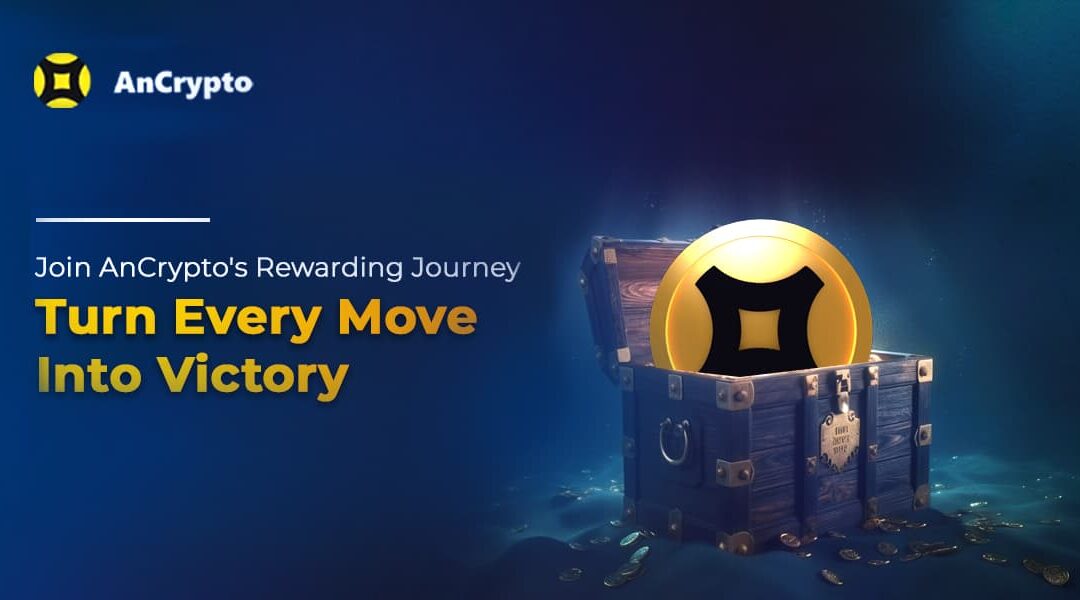
Jan 24, 2024
AnCrypto is thrilled to announce an exciting Coins and Gems Campaign, presenting enticing rewards for every wallet transaction!
From this moment onwards, our wallet is not just a storage space for your digital wealth; it’s a source of rewards for every activity within the app, even as simple as opening it daily. Recognizing the profound impact each transaction has in the web3 world, AnCrypto introduces this campaign that acknowledges and rewards users for every interaction.
Continue reading to know how you can participate in the campaign and earn exciting rewards.
Turn Every Interaction Into Earning With AnCrypto
Unlike traditional wallets, AnCrypto goes beyond safeguarding your digital assets – we believe in valuing every engagement, offering endless opportunities to amass rewards, and ensuring every move counts. This distinctive approach sets AnCrypto apart, reflecting our sincere commitment to the prosperity of our dedicated user base.
The AnCrypto Advantage: From Security to Engagement
By introducing this new rewards campaign, AnCrypto takes a bold step, recognizing that the true value of a wallet extends beyond mere security. We believe in transforming your wallet into a dynamic space where every action counts and every interaction is rewarded.
The Campaign is a testament to the wallet’s dedication to ensuring that each user not only secures their digital assets but also turns every move into a victory.
How to Participate and Earn Exciting Rewards?
Now that you are ready, here is how you can participate in the Coins and Gems Campaign and unlock exciting rewards at every turn.
- Refer and Swap
The referral program is a cornerstone of the campaign. Simply refer a friend, and every time your referred user engages in a swap transaction of $100, you get a free gem. This way, your network’s activity becomes a source of rewards for both you and your referrals.
- Daily App Usage
Engaging with the AnCrypto app daily is now a rewarding experience in itself. By just opening the app daily, you earn 20 coins. But the rewards don’t stop there.
Every activity within the app – be it swapping, sending/receiving, buying crypto, staking crypto, or interacting with decentralized applications (DApps) – contributes to your growing rewards.
- More Coins, Better Rank On Leaderboard
Your position on the leaderboard is a direct reflection of your engagement within the AnCrypto app. Climbing higher on the leaderboard unlocks prestigious airdrops. To be at the top, all you need is to engage in multiple activities on the application and collect your coins. This approach helps us to create a sense of achievement and recognition for your active participation. And, as you continue to actively engage with the AnCrypto app, your position on the leaderboard improves, unlocking exclusive rewards and recognition within the community.
- Collect Exclusive Airdrops Every Week
Participate in our Exclusive Airdrop Program for weekly rewards! Earn $1, $5, and $10 respectively for collecting 250, 500, and 2000 coins. These airdrops occur every 7 days, introducing an element of anticipation to your AnCrypto experience. Stay tuned for an upcoming enhancement – the top 20 users on the leaderboard will soon enjoy extra rewards. Redeem your coins to add a touch of excitement to your week.
- Gems For Cash
Gems are the coveted currency within the AnCrypto ecosystem, and they come with their own set of rewards. Every time your referral completes a swap transaction of at least $100, you earn 1 gem, and for every 5 gems earned, you receive $5. The gems earned through various activities can be accumulated for significant rewards, adding a layer of excitement to every interaction.
Take Away
The Coins and Gems Campaign is not just about rewards; it’s about fostering an active and engaged community within the AnCrypto ecosystem. The campaign’s impact extends beyond individual rewards, creating a sense of community and shared success. As users refer their friends and the network grows, the collective engagement becomes a driving force for the prosperity of the entire AnCrypto community.
Don’t miss the opportunity to join AnCrypto’s rewarding journey today. Turn every move into a victory and experience the excitement of a dynamic and prosperous digital ecosystem!
Join the campaign today!
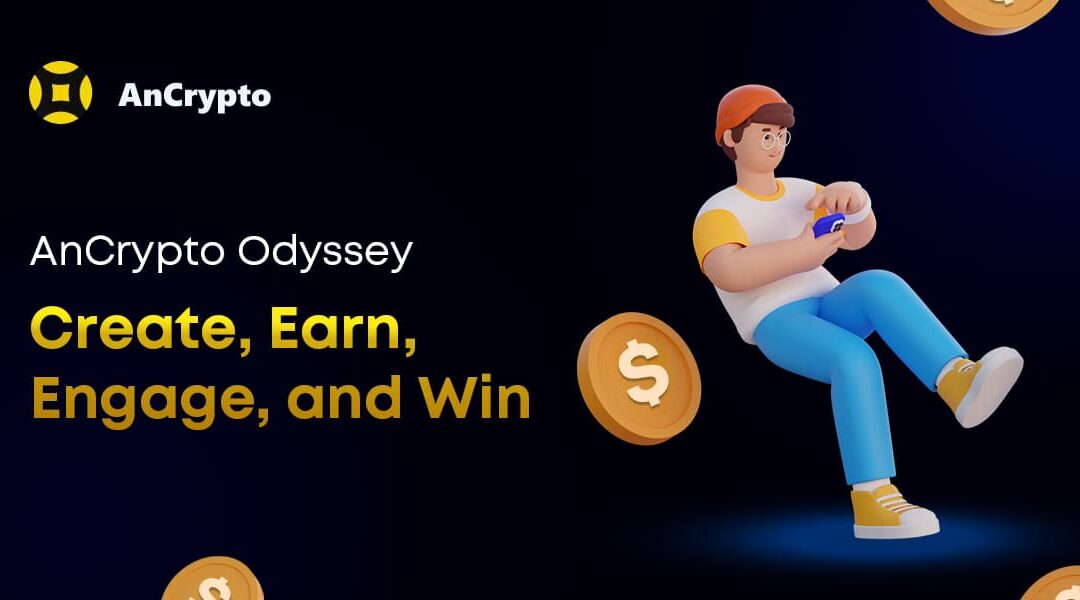
Jan 17, 2024
Great UX is a silent storyteller. AnCrypto is scripting a tale of seamless delight through its latest campaign; a digital gold rush where users can mine rewards, discover cutting-edge features, and become pioneers in the imminent crypto revolution.
Video Vibes: Get Creative, Get Rewarded!
Embark on the AnCrypto Quest, a rewarding adventure now open to video creators! Make an informative 30-second to 1-minute video about your favorite AnCrypto feature. We’re talking $2 for each unique and awesome video. More videos, more cash — it’s like a treasure hunt, but with videos!
Become a Crypto Legend: Rise to the Top
Your video skills can take you places! The higher you go, the more rewards and props you get. Reach the pinnacle, and bask in the recognition and additional rewards that come with being a top video contributor.
Lights, Camera, Interaction: Your Video, Your Voice
Don’t just make any video — make it awesome! Share your AnCrypto experience, show off its cool features, and keep it positive. The campaign encourages participants to create engaging video content, sharing personal experiences, insights, and opinions about AnCrypto.
Each video submission must include a link to the AnCrypto website, showcase specific features, and exude a positive tone. Whether it’s a quick 30-second reel or an in-depth 1-minute video, your contribution adds vibrancy to the crypto narrative, shaping the community’s understanding and fostering a sense of shared exploration.
Tech Talk: AnCrypto’s Cool Features
Explore cross-chain one-click payments using the Chat and Pay feature, compare AnCrypto with Trust Wallet and MetaMask, tag AnCrypto with leading Web3 gaming protocols, and delve into how AnCrypto delivers a Web 2.0 experience in a Web 3.0 wallet without compromising security.
Participants are encouraged to explore and showcase these features in their video submissions, providing an interactive and insightful look into the world of AnCrypto.
Weekly Video Treats: Cash In Your Creativity
This isn’t just about money; it’s about celebrating the community, your stories, and the power of crypto. Each week, the best video creators get rewards. And hey, the video that gets the most love, will also be rewarded.
Stand your chance at a $2 reward per video and the best entry with the most traction will receive $10.
Rewards will be given weekly to these outstanding video creators.
Submission Guidelines
- One video per user per week.
- Include a minimum of 2 screenshots showcasing the explained feature.
- Keep it positive for AnCrypto — we’re all about good vibes!
- Share on your YouTube or Instagram, tagging the official AnCrypto channel/profile.
- Spread the love — tag @AnCryptoWallet on YouTube or @ancrypto.io on Instagram, fellow competitors, and influencers using #AnCrypto.
- Video length: Minimum 30 seconds.
- No cap on maximum length — go wild if you’d like!
Your Video Adventure Awaits!
Embark on a rewarding adventure with AnCrypto! Download the app, create your wallet, and seize the opportunity to participate in our exciting video contest. By showcasing your creativity, you are not just contributing to the crypto narrative but, stand a chance to earn fantastic rewards. It’s a simple process — download AnCrypto, create your wallet, and start using it.
Participate now, shape the future, and let the rewards roll in!
Don’t miss out on this thrilling journey — download AnCrypto now and be part of the action!
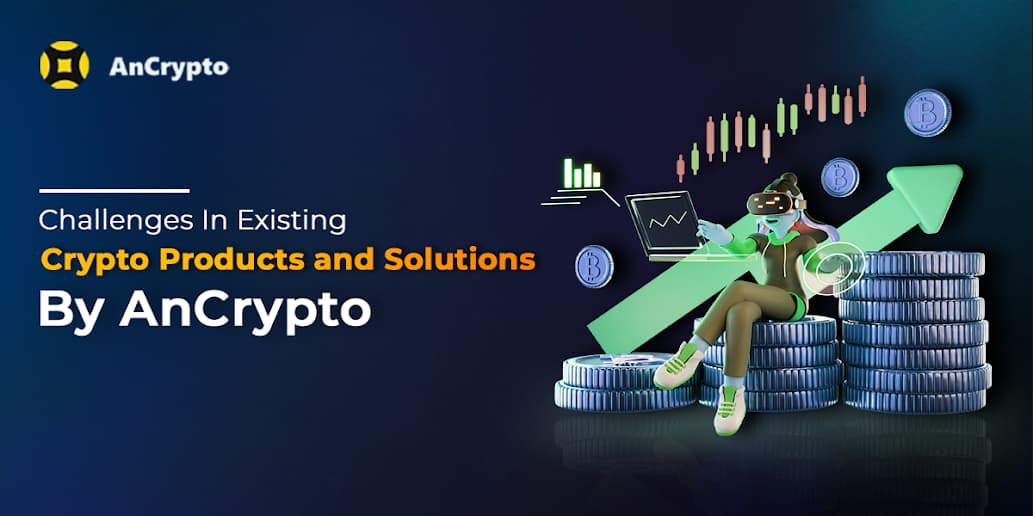
Jan 12, 2024
Cryptocurrencies are gaining widespread adoption and popularity. However, navigating through existing products is like deciphering a complex code. Challenges such as complicated wallet interfaces, confusing addresses, and limited flexibility still hinder the user experience and inclusivity. To address these issues, AnCrypto has introduced a crypto wallet for NFTs and other digital assets, making decentralized finance simple and accessible for all. In this blog, we’ll explore the common hurdles faced by crypto users and how AnCrypto’s innovative solutions address those concerns.
Limitations in Existing Crypto Wallet Products & Solutions
- Complex User Experience
Challenge: Current crypto wallets are not easy to use, especially for those new to the crypto world. Complicated terms and a confusing user interface make the crypto experience overwhelming for users.
Solution: AnCrypto streamlines the user experience by offering an intuitive interface, ensuring a simplified crypto experience. This chat and pay wallet makes crypto transactions simpler by replacing the traditional wallet address with a decentralized identity solution. The platform caters to both crypto experts and newcomers, fostering broader adoption.
- Error-Prone Transactions
Challenge: Incorrect wallet addresses and forgotten passwords have resulted in significant financial losses for many people, making it hard for users to trust decentralized platforms for their day-to-day transactions and asset management.
Solution: AnCrypto addresses this by introducing usernames (your decentralized identity), simplifying the transaction process. Users can effortlessly initiate direct crypto payments in the chat window without requiring wallet addresses, reducing the risk of errors and ensuring a smoother experience. This feature not only benefits seasoned users but also makes crypto more accessible to the unbanked.
- Lack of Interoperability
Challenge: Existing crypto wallets often operate within specific blockchain ecosystems, limiting user flexibility to make investments and restricting their scope to one platform.
Solution: AnCrypto promotes interoperability, allowing users to navigate seamlessly across diverse blockchains and make cross-chain transactions. This eliminates the need for multiple wallets and enhances security by providing a unified platform for managing and investing in various cryptocurrencies.
- Mostly Single Chain
Challenge: Existing products operate predominantly within a single blockchain. This approach limits overall crypto adoption and fails to deliver the versatility demanded in modern asset management. Building multi-chain interoperable solutions remains an acute challenge.
Solution: AnCrypto breaks free from this constraint, empowering users to diversify their holdings across multiple blockchains and explore promising developments across different blockchains. This approach enhances user convenience and reduces security risks associated with managing multiple single-chain wallets.
- Restricted Scope of Past DIDs
Challenge: Many crypto wallets now offer decentralized ID to increase privacy. But these ID systems often only work on one blockchain, expire over time, or use non-standard methods. This stops wallets from easily verifying users across different chains and platforms.
Solution: AnCrypto introduces a Universal Decentralized Identity, providing multi-chain accessibility with lifetime validity. By supporting features like Chat & Pay and Swap & Pay, AnCrypto makes it easy for anyone to transact across multiple platforms. Also, the wallet eliminates the need for periodic renewals, paving the way for a standardized and open-source DID ecosystem. It’s not only about managing multiple wallets; it’s about freedom and convenience.
What Else AnCrypto Has for You?
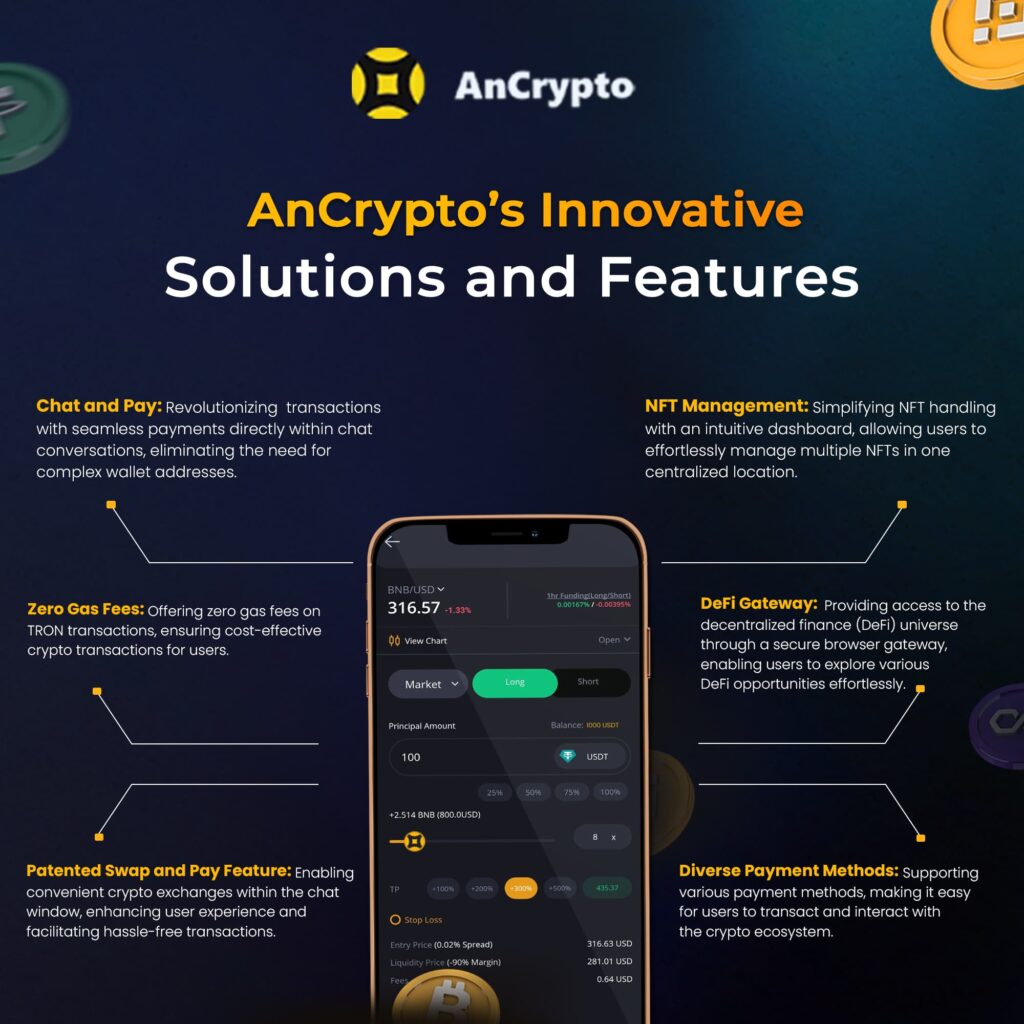
- Chat And Pay
AnCrypto simplifies crypto transactions with its Chat And Pay feature, integrating a familiar chat interface for seamless sending and receiving of cryptocurrencies. Users can effortlessly make crypto payments in chats with just a tap, eliminating the need for sharing wallet addresses. The Chat And Pay feature offers a user-driven app experience, simplifying transactions, providing effortless transaction tracking, and introducing a unique forward request functionality.
- Swap and Pay
AnCrypto’s patented Swap and Pay feature allow users to swap assets and make payments within the chat window using usernames. This user-friendly interface streamlines the process of transferring cryptocurrencies, calculates required gas fees, and offers a hassle-free way to fulfill transaction requests without the need for users to perform actual swap transactions.
- Swapping
The Swapping feature simplifies the cryptocurrency exchange process, connecting users directly for non-custodial, on-chain settlement. With no maker or taker fees, users experience zero transaction costs, quick trading, and an intuitive platform for contributing assets and earning rewards. AnCrypto transparently displays gas fees, reducing the time required for transitioning between different cryptocurrencies.
- Tron V2 Staking
The Tron V2 Staking in our multichain crypto wallet maximizes cryptocurrency holdings by allowing users to earn rewards and actively participate in the security and governance of the Tron blockchain. This feature provides a source of passive income, flexibility in staking and unstaking, and contributes to the overall integrity and decentralization of the Tron network.
- On-Ramp Solution
AnCrypto simplifies entry and exit from the cryptocurrency world with its On-Ramp feature, offering a user-friendly on-page ramp system for converting fiat currency into cryptocurrencies directly within the platform. This dual On-Page Ramp functionality eliminates the complexities associated with external exchanges and withdrawal processes.
- Tron Gasless Transactions
The gasless Tron transactions allow users to send, receive, and swap tokens on the TRON blockchain without paying any fees. This economical empowerment feature provides users with more control over their TRON holdings, expedites transactions, and promotes inclusive access to the crypto world.
Takeaway
AnCrypto isn’t just a crypto wallet; it’s a solution to make the crypto world simpler, more secure, and accessible to everyone. By tackling the pain points of existing wallet products, AnCrypto makes decentralized finance easy for newcomers and experts alike. Going beyond a basic wallet, AnCrypto offers the gateway to greater utility and security, enabling anyone to unlock the full potential of the web3 world. Download the app now!
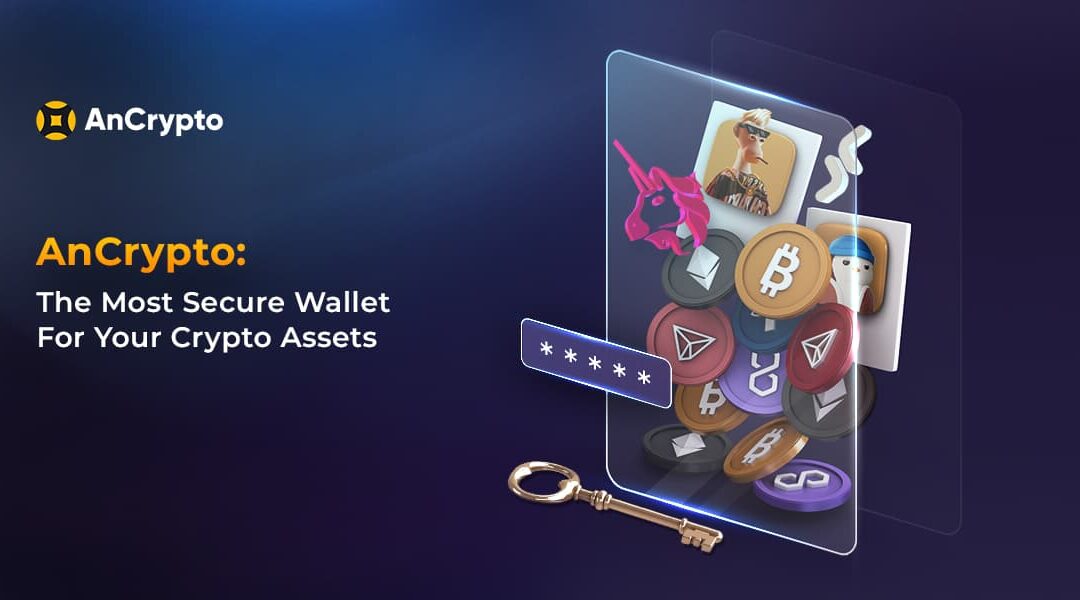
Aug 25, 2023
In crypto trading, the primary concerns are the security and safety of our digital assets. The increasing popularity of crypto is not just attracting genuine investors but also malicious scammers. Therefore, it becomes more important than ever to safeguard your crypto assets. One way to achieve this is through a reliable and secure DeFi wallet.
Among the various options available, AnCrypto stands out as a safe crypto wallet solution that supports millions of cryptocurrencies while providing essential features such as staking and purchasing crypto.
Know About AnCrypto: Your Safe Choice For Crypto Management
AnCrypto is a decentralized and non-custodial wallet that operates on a key-based system in which the public key acts as the receiving address for crypto and a private key acts as the transaction pin, bestowing asset ownership. By supporting features like multi-browser capabilities, the wallet can handle diverse assets across various blockchains.
Introducing Username – A secure replacement for smooth crypto transactions
There have been instances where crypto users lost crypto assets worth millions of dollars due to sending them to the wrong addresses. Blockchain transactions are irreversible, and there is no way to recover the assets. Setting asset security as paramount, this cryptocurrency chat and pay wallet incorporate the unique “username” feature that eliminates the dependency upon complex wallet addresses for sending/receiving crypto. Users can initiate send/receive requests in Chats by searching for the respective username on the Web3 network. This unique feature makes AnCrypto stand out as the safest choice for exchanging assets as there is no chance of a mistake.
Key Features of AnCrypto Wallet: Securing Crypto Network
- Key-Based Security
AnCrypto Wallet adopts a keypair system, setting it apart from centralized wallets. Users retain control over their private keys, safeguarded through a 12-word seed phrase. This level of control enhances security by preventing unauthorized access.
- Non-Custodial
Being a non-custodial wallet, AnCrypto grants users complete control over their assets. Users can make secure transfers, trade on decentralized applications, stake assets, store/share NFTs, and send/receive funds without relying on third-party custodians.
- Interaction with DApps
DeFi transactions occur on web3 applications, making browser compatibility a crucial feature. AnCrypto Wallet integrates with trusted DeFi protocols and web browsers, ensuring a smooth user experience. It acts as a bridge between users and decentralized applications (DApps) on blockchain networks. DApps provide various services, such as decentralized finance (DeFi), NFT marketplaces, and decentralized exchanges (DEXs).
By connecting your wallet to these DApps, engage in activities like lending, borrowing, trading, and participating in token sales without a centralized intermediary.
- Multi-Asset Accessibility
While many wallets provide support for limited crypto and blockchains, AnCrypto Wallet offers multi-chain support, allowing users to seamlessly interact with various blockchains and explore diverse staking or yield farming opportunities without needing separate wallets for each chain. It goes beyond the standard crypto wallet functions, allowing users to perform swaps, stake, trade, buy crypto with fiat currencies, and interact with decentralized applications without leaving the wallet.
This means you can use a single wallet to store various digital assets, including major cryptocurrencies like Bitcoin and Ethereum, as well as other tokens built on different blockchain standards like ERC-20 tokens on Ethereum or BEP-20 tokens on Binance Smart Chain.
What makes AnCrypto a safer choice?
- 12-Word Mnemonic Passphrase – A Key To Your Wallet
AnCrypto incorporates the 12-word mnemonic passphrase/seed phrase/recovery phrase, which is randomly generated at the time of wallet creation and acts as a password/backup for your decentralized wallet.
This passphrase serves as a cryptographic representation of your private keys. If you lose access to your wallet, you can use this mnemonic to restore your wallet on a new device. And if you forget the password, you can always recover it using the AnCrypto app. However, it is crucial to keep this seed phrase secure and confidential, as it provides access to your cryptocurrency holdings.
- Password-Protected Access – No Pin, No Entry
Password protection is a fundamental security measure for any digital wallet. When you create an account with AnCrypto Wallet, you can set a strong password that acts as the initial barrier to prevent unauthorized access to your funds.
Also, every time you execute a transaction with the AnCrypto app, you need to enter the password, which makes the wallet an ideal choice for users who want to keep their assets protected at every step of blockchain transactions.
One must choose a strong and unique password that is not easy to guess and keep it confidential.
- Biometric Authentication: Fingerprint/Face Recognition
For an added layer of protection, AnCrypto uses Biometric authentication – unique physical characteristics or behavioral traits to verify the user’s identity and adds an extra layer of security to the assets within the wallet.
The methods used within the app for user authentication are facial recognition and fingerprint scanning.
Therefore, in addition to using the password or PIN, you can use your biometric data to unlock and access your wallet. This significantly enhances the security of your wallet by making it more difficult for unauthorized individuals to gain access even if your password is compromised.
- Transaction Control: Your Money, Your Choice
AnCrypto wallet users have granular control over their crypto transactions. While transacting, you can choose to set custom transaction fees based on your preference for transaction speed or cost efficiency.
Additionally, you get to adjust the gas limit to specify how much gas (transaction fee) you are willing to pay for each transaction. This control ensures that you can manage your funds efficiently and tailor your transactions to your needs.
- Backup And Recovery Of Seed Phrase
AnCrypto provides a backup and recovery for the mnemonics against data loss or device failures. During the wallet setup, you get a seed phrase, a series of randomly generated words that serve as a backup, allowing you to recover your wallet and access your funds if you lose your device or forget your password.
In case you end up losing the seed phrase itself, you can recover it using the AnCrypto app. However, to use this feature, you need to be logged in to the app.
- Privacy Protection: Never Ask For Your Personal Information
AnCrypto wallets prioritize the user’s privacy. Unlike other crypto wallets that ask for personal information (e.g. KYC) at the time of registration, AnCrypto does not require any of your data.
With this Chat and Pay Crypto wallet, your identity is tied solely to your private keys, providing a higher degree of privacy and anonymity in your cryptocurrency transactions.
- Self-Custody: Your Assets, Your Control
AnCrypto puts you in complete control of your cryptocurrency holdings. Unlike centralized wallets provided by exchanges or custodial services, where you entrust your funds to a third party, it allows you to manage your private keys directly.
Private keys are unique cryptographic keys that grant access to your wallet and authorize transactions. By holding your private keys, you have sole ownership and responsibility for your funds.
- No Device Dependability
If you are using the AnCrypto app, you do not need to rely upon a specific device to access your wallet. You can operate the wallet and manage your cryptocurrencies from anywhere with an internet connection, just by downloading the app.
Therefore, you will never be dependent upon a specific physical location or device to use your wallet, making it convenient for users who need to transact on the go.
Take Away
Security will always be of utmost importance in the crypto world, and AnCrypto has a strong emphasis on offering a safe and secure wallet solution for managing, trading, and storing digital assets. AnCrypto stands out to be a secure cryptocurrency wallet thanks to its special chat and payment features, key-pair system, multi-chain asset, and decentralized and non-custodial structures. Its unique capabilities are what make it different and empower the users to take complete control of their crypto journey.











